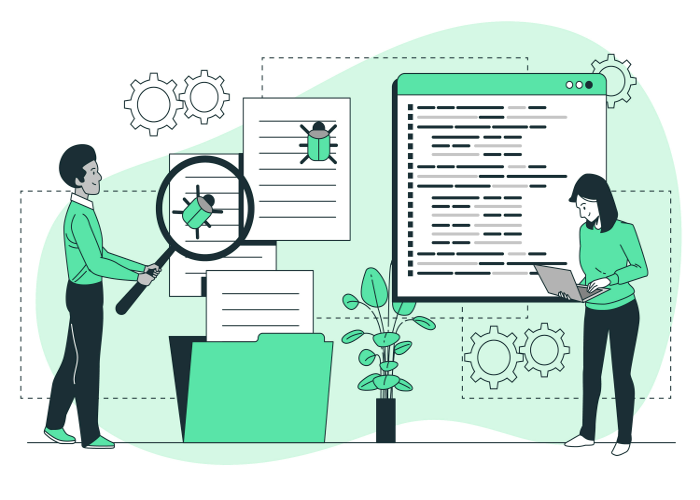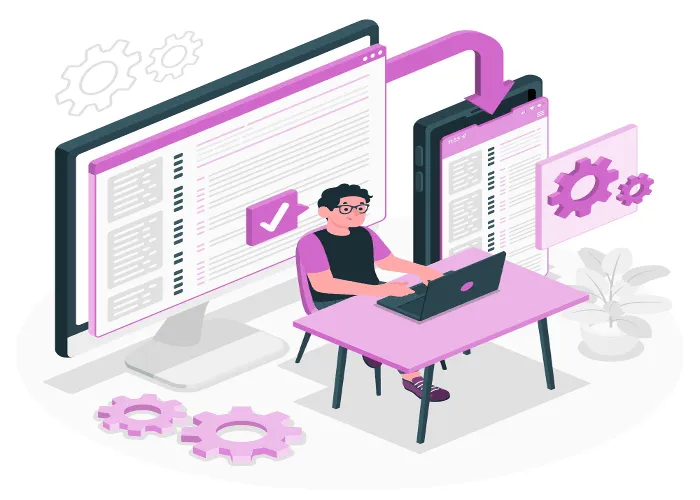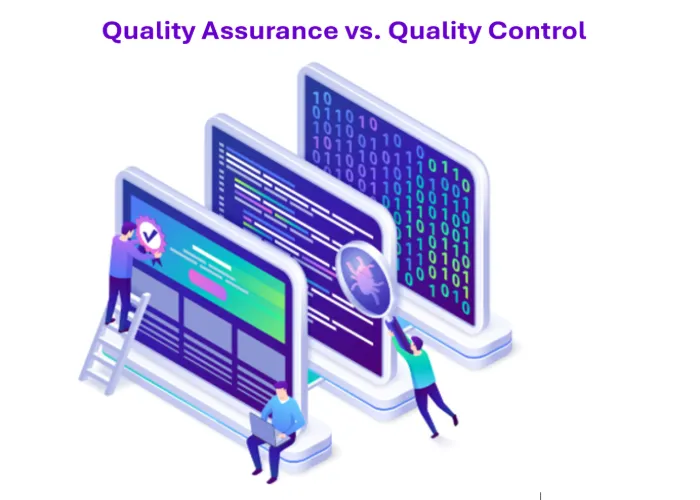Software Testing Life Cycle-Know The Best How To Techniques

Introduction
In the modern software development world, ensuring quality and reliability is crucial to meeting customer expectations and gaining a competitive edge. The Software Testing Life Cycle (STLC) is a structured sequence of stages that guides testing teams in verifying software quality from start to finish. By following this life cycle, teams can uncover defects early, address quality issues, and release software that performs well under various conditions.
This guide covers the phases of the STLC, best practices for each stage, and the roles involved, providing a detailed look at how to optimize testing efforts.
What is the Software Testing Life Cycle (STLC)? The Software Testing Life Cycle (STLC) is a defined set of phases for testing software that aims to standardize testing practices, ensure thorough validation, and help teams systematically detect and resolve defects. Each phase in the STLC has its own objectives, activities, and deliverables that move the testing process toward a high-quality release. STLC phases may vary based on organization and project needs, but the following six stages are widely accepted as foundational:
While these stages are generally linear, they can also be iterative. If requirements change or defects arise during later stages, teams may revisit previous phases to address the new needs.
Phases of the Software Testing Life Cycle (STLC)
1. Requirement Analysis
The Requirement Analysis phase is the first step, focusing on understanding what the software should achieve. The testing team reviews functional requirements (e.g., features and behaviors) and non-functional requirements (e.g., performance, security, usability) to ensure they are well-defined and testable. During this phase, the team identifies testable aspects of the application and begins drafting a Requirement Traceability Matrix (RTM) to map requirements to test cases.
Key Activities:
Conduct requirement reviews with stakeholders. Identify testable and non-testable requirements. Analyze risks and determine testing priorities. Create the Requirement Traceability Matrix (RTM) to track testing coverage.
Best Practices:
Involve all relevant stakeholders early to clarify ambiguities and avoid misunderstandings. Ensure requirements are testable and measurable. Use the RTM to ensure every requirement has associated test cases and a clear link between test case and requirement.
Deliverables:
Requirement analysis document Feasibility report Requirement Traceability Matrix (RTM)
2. Test Planning
Test Planning is the blueprint phase, where the testing team develops a detailed approach for testing the software. This phase involves defining the scope, objectives, and types of tests required (such as functional, regression, and performance testing), setting timelines, estimating resources, and assigning roles and responsibilities.
Key Activities:
Define the test strategy, including types of testing and tools to be used. Estimate resources, timeline, and budget. Identify testing risks and mitigation strategies. Establish test metrics for measuring quality and test progress.
Best Practices:
Develop a clear, comprehensive test plan to guide the entire testing process. Align the test plan with project objectives and timelines to avoid bottlenecks. Identify potential risks early and plan for mitigation. Set clear metrics for tracking metrics and quality.
Deliverables:
Test plan document Test strategy Testing schedule and resource allocation
3. Test Case Development
In this phase, the testing team begins designing and developing test cases based on the requirements and test strategy. Each test case outlines specific steps, inputs, and expected results for verifying different parts of the application. Test cases should be designed to cover all aspects of functionality, from positive to negative scenarios, and to address edge cases.
Key Activities:
Write detailed test cases with step-by-step instructions. Create and validate test data to ensure realistic scenarios. Map each test case to the relevant requirement in the RTM. Conduct peer reviews of test cases to ensure quality and completeness.
Best Practices:
Write test cases that are clear, concise, and easy to execute. Design tests for reusability and maintainability, as this will save time during regression testing. Focus on both positive and negative scenarios to ensure comprehensive testing.
Deliverables:
Test cases Test data Updated Requirement Traceability Matrix (RTM)
4. Test Environment Setup
The Test Environment Setup phase involves creating the necessary infrastructure, tools, and environments where testing will be conducted. This environment should mirror the production environment as closely as possible to ensure accurate and realistic testing results. Test data is also prepared during this phase, as is configuration of any required tools, databases, or networks.
Key Activities:
Identify hardware, software, and network requirements. Set up and configure the test environment, including servers and databases. Prepare and validate test data. Verify test environment readiness before execution.
Best Practices:
Ensure the environment mirors the production environment for accurate test results. Validate all configurations, connections, and data to minimize interruptions during test execution. Consider automating the setup process if possible to improve efficiency.
Deliverables:
Configured test environment Test data Environment validation checklist
5. Test Execution
In the Test Execution phase, the team begins executing the test cases in the prepared environment. Each test case’s outcome is compared to the expected result, and any discrepancies are logged as defects. Testing and development teams often work closely during this phase to address and resolve issues quickly.
Key Activities:
Execute test cases and log results. Identify, log, and prioritize defects for fixing. Retest defects after they are resolved. Continuously update the RTM to reflect testing progress.
Best Practices:
Prioritize test execution based on risk and impact. Work closely with the development team to address and resolve defects promptly. Keep detailed records of test results and defect statuses.
Deliverables:
Test execution reports Defect logs with severity and priority Updated Requirement Traceability Matrix (RTM)
6. Test Cycle Closure
Test Cycle Closure marks the end of the testing cycle, where the team reviews the testing process, metrics, and outcomes to ensure objectives were met. This phase often includes a retrospective meeting to identify areas of improvement and establish lessons learned, which can inform future testing cycles.
Key Activities:
Evaluate key test metrics, including defect density, test coverage, and pass/fail rates. Conduct a retrospective to review successes, challenges, and areas for improvement. Document best practices and lessons learned. Archive test assets and prepare a closure report.
Best Practices:
Perform an in-depth review to gather valuable insights for future projects. Document insights from each cycle to capture valuable insights to improve future processes Archive all test artifacts for reference and compliance. Involve the entire team in the retrospective to gather diverse perspectives.
Deliverables:
Test closure report Summary of lessons learned Archived test cases and documentation
Key Roles in the Software Testing Life Cycle (STLC)
Effective testing requires a diverse team with clearly defined roles, each contributing to different aspects of the process:
Test Manager/Lead: Oversees the testing team, defines the strategy, manages resources, and ensures the team adheres to the test plan. Test Analyst: Analyzes requirements and designs test cases, ensuring they are aligned with project objectives and cover all necessary scenarios. Test Engineer: Executes test cases, identifies defects, and collaborates with developers to resolve issues. Automation Engineer: Focuses on developing automated test scripts, setting up automation frameworks, and integrating tests into CI/CD pipelines. Quality Assurance (QA) Engineer: Ensures that testing processes and results comply with quality standards, conducting audits and monitoring testing metrics. Business Analyst (BA): Assists with requirements clarification, ensuring test cases align with business goals and user needs.
The Role of the STLC Within the SDLC
The Software Testing Life Cycle (STLC) plays a crucial role within the Software Development Life Cycle (SDLC) by providing a structured approach to ensure software quality and reliability before deployment. While the SDLC encompasses the entire process of software development — from requirement gathering through design, development, testing, deployment, and maintenance — the STLC specifically focuses on the testing phases within the SDLC to verify and validate the software’s functionality, performance, and reliability. Here’s a look at how the STLC fits into and complements the SDLC:
- Quality Assurance at Every Stage The STLC provides a framework for testing activities that can be integrated into each stage of the SDLC, ensuring that testing is continuous rather than just a final step. This approach, often seen in Agile and DevOps methodologies, promotes early defect detection by running tests in tandem with development. For example:
Requirement Analysis (SDLC): In this phase, testers in the STLC analyze requirements to identify testable scenarios, ensuring that requirements are clear, testable, and aligned with user needs. Design (SDLC): Testers may design test cases during the development of architectural or system design, identifying potential issues early on.
-
Prevents Defects Rather Than Just Detecting Them STLC is not only about finding bugs but also about preventing them. By involving testers early in the SDLC stages, potential issues in requirements and design are identified sooner, allowing developers to address them before they become costly defects. This is part of the Shift Left testing approach, where testing activities are initiated early in the development process, reducing the time and cost associated with fixing late-stage bugs.
-
Structured Phases for Comprehensive Testing The STLC provides a series of well-defined phases — including Requirement Analysis, Test Planning, Test Case Development, Test Environment Setup, Test Execution, and Test Cycle Closure — that ensure testing is thorough and covers both functional and non-functional aspects of the software. Each of these phases aligns with specific SDLC stages and ensures that testing efforts are strategically planned and executed, reducing the risk of overlooking critical defects.
-
Supports SDLC in Achieving High-Quality Standards The ultimate goal of the SDLC is to deliver a high-quality product that meets user expectations. The STLC supports this goal by ensuring that every component, feature, and performance metric of the software is validated before deployment. Through thorough testing, STLC helps confirm that the software:
Meets functional and performance requirements. Is free of critical and high-severity defects. Is reliable and stable under expected load conditions.
-
Metrics and Feedback for Continuous Improvement The STLC contributes to continuous improvement in the SDLC by providing valuable metrics and feedback after each testing cycle. Metrics such as defect density, test coverage, pass/fail rate, and test execution progress allow development teams to understand the quality of the software at each stage. This feedback is essential for making informed decisions about release readiness and planning improvements for future development cycles.
-
Enables Faster and More Efficient Releases With automated testing, STLC accelerates the SDLC by enabling Continuous Integration (CI) and Continuous Delivery (CD) practices. Automated test cases are integrated into CI/CD pipelines, providing fast feedback on code quality and enabling rapid, reliable deployments. This integration helps teams shorten the release cycle without compromising on quality, an essential advantage in today’s fast-paced software environment.
-
Reduces Overall Cost and Time-to-Market The STLC’s structured approach to testing reduces costs associated with fixing bugs at later stages, especially after the product has been deployed. By catching issues early and minimizing rework, the STLC significantly cuts down on development time and effort, helping teams to deliver quality software more quickly and cost-effectively.
How STLC Interacts with Each Stage of SDLC
Here’s how STLC activities align with SDLC phases:
| SDLC Stage | STLC Activity |
|---|---|
| Requirement Gathering | Requirement Analysis - Identifying testable requirements and planning test coverage. |
| System Design | Test Planning - Developing the testing strategy, estimating resources, and defining test objectives. |
| Development | Test Case Development - Creating test cases that will validate each functional and non-functional requirement. |
| Integration and Testing | Test Execution - Executing test cases, logging defects, and validating functionality and performance. |
| Deployment | Test Cycle Closure - Analyzing test results, documenting best practices, and ensuring release readiness. |
| Maintenance | Regression Testing - Retesting the software after updates to ensure no new defects are introduced. |
Conclusion
The Software Testing Life Cycle (STLC) is a structured framework that enhances testing efficiency, enables defect detection, and ensures software quality before release. By following each phase of the STLC, adopting best practices, and involving the right team members, organizations can deliver reliable, high-quality software that meets user expectations. Incorporating the STLC into your development workflow is a key step toward achieving excellence in software quality and building user trust.




🗨️ Reader Comments